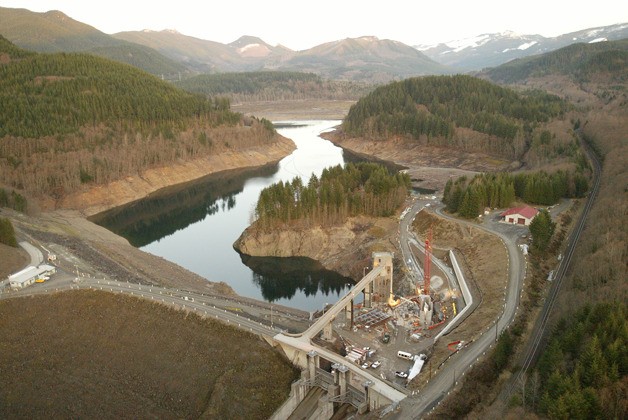The Howard Hanson Dam reservoir has reached an elevation of 1,167 feet above sea level, allowing engineers, geologists and other scientists to run a battery of tests to gather more data on the right abutment drainage improvements that are completed and under way.
At the end of testing, the U.S. Army Corps of Engineers will share findings with national experts and will determine prior to this November if the dam can return to its authorized flood risk reduction operation.
The Corps is measuring seepage rates through the abutment, functionality of the new drains, as well as conducting other investigations during the next couple of weeks. That data then will be analyzed. The results of that data analysis will help determine paths forward for further interim measures, as well as any potential long-term repairs, to reduce the flood risk in the highly populated cities of Auburn, Kent, Renton and Tukwila and unincorporated King County.
“As construction on the drainage improvement work continues, all indications are that the new measures will perform as intended,” said Rob Romocki, the Seattle District’s Dam Safety program manager. “Once the current improvement work has been fully completed, we will evaluate the effectiveness of those measures and determine if we will be able to hold a flood pool as the dam was originally designed.
“We need to look at all the data from this summer’s conservation pool and analyze what we see before a decision can be made on how to safely operate the dam next flood season.”
While the reservoir level is being held steady throughout this testing, outflows from the dam will track reservoir inflows. As of this release, inflows and outflows are roughly 1,200 cubic feet per second. However, flows can change in a matter of hours, dependent upon weather, so caution is advised, the Corps said.
Flows downstream of the dam are expected to remain well below flood stage, the Corps said.
More details and history about the dam and the right abutment issue can be found at: http://www.nws.usace.army.mil.


